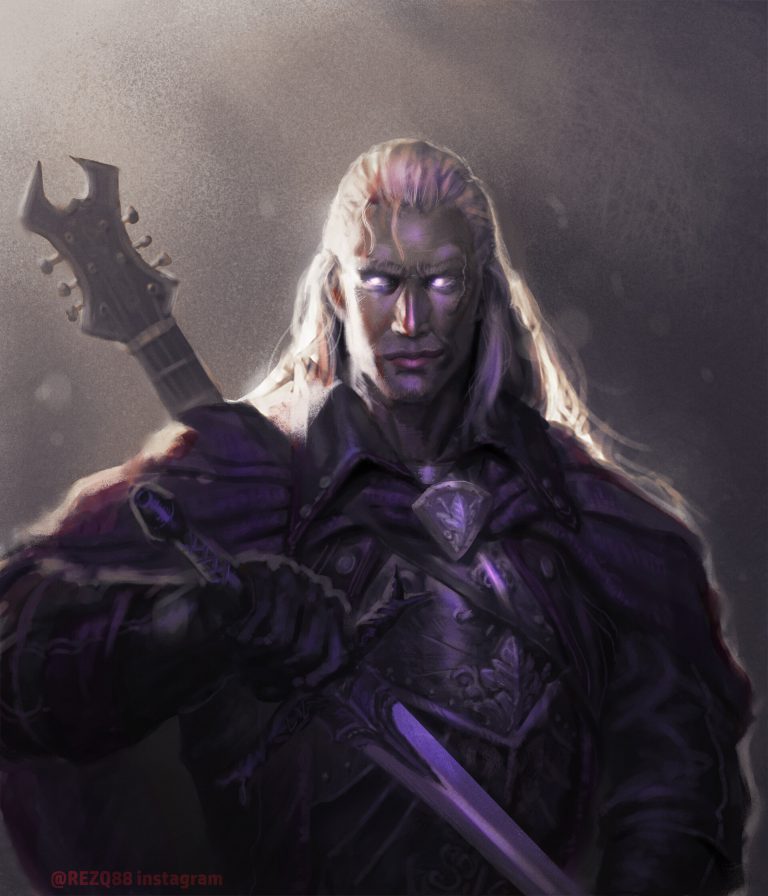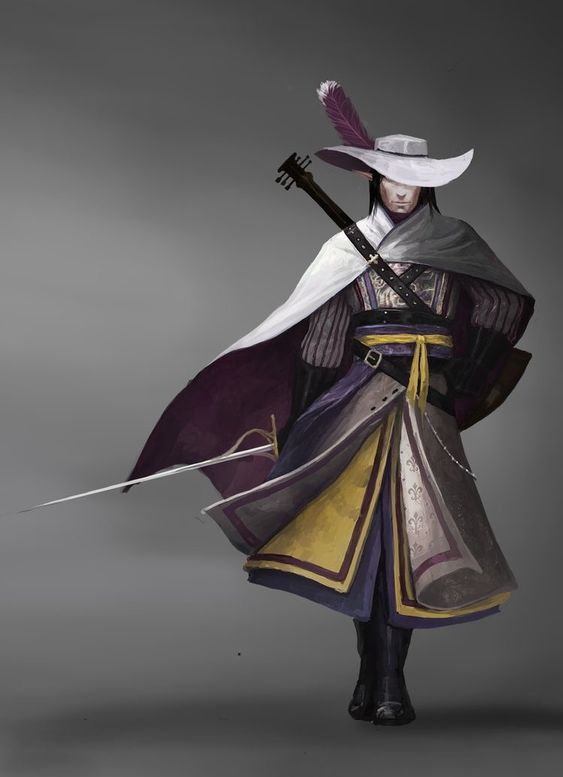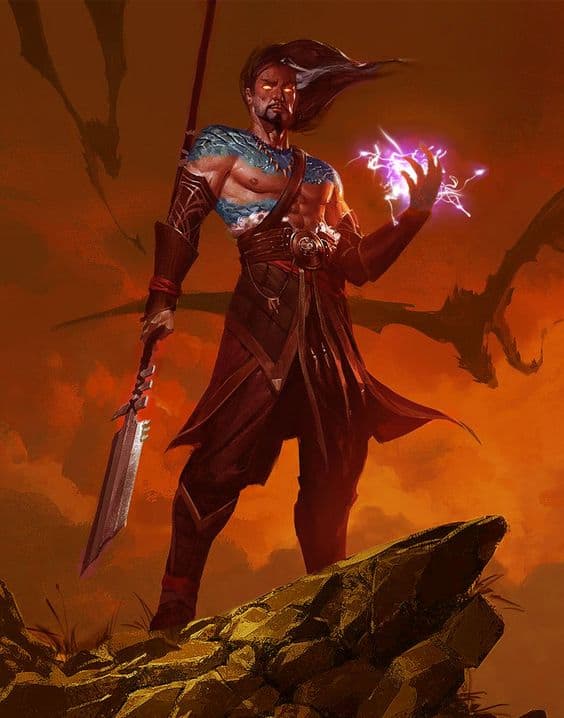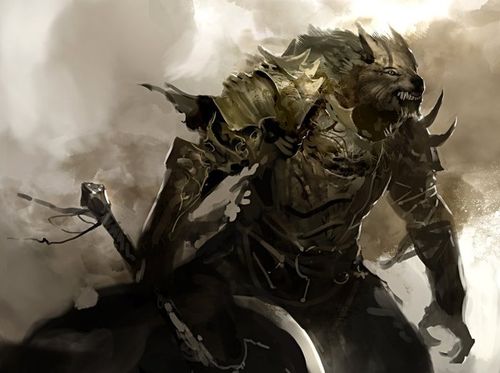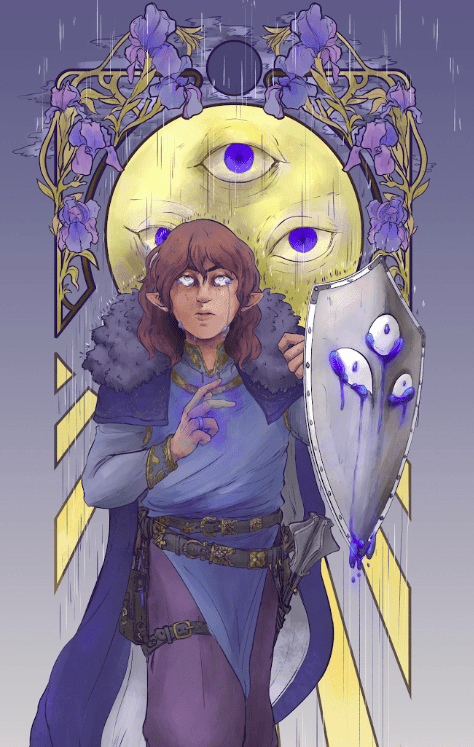D&D 5e: College of Lore Bard Guide
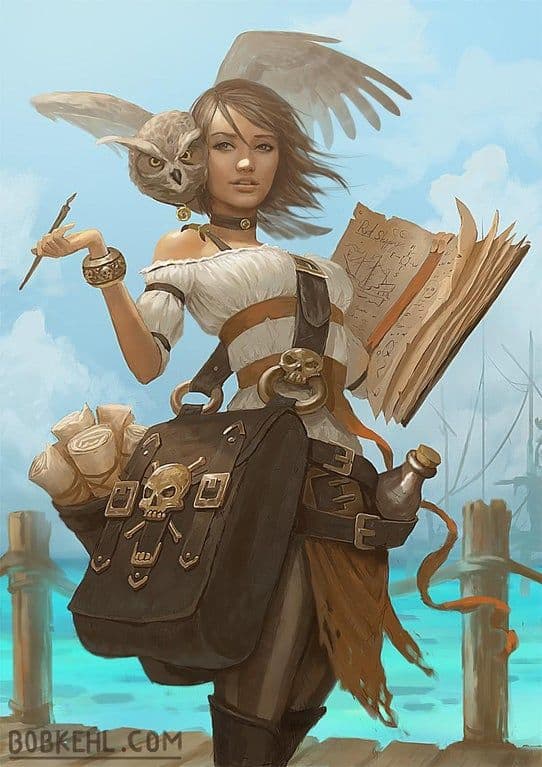
D&D 5e: College of Lore Bard Guide
Role in the Party
One of the oldest Bardic subclasses in 5e, the College of Lore is what most people probably think of when they hear the term ‘Bard.’ A wandering minstrel, collecting tall tales as they travel from place to place and telling the stories of their adventures, a valiant explorer, digging into dusty crypts to unearth ancient secrets, and a sly, conniving court jester who whispers dark things in the Viceroy’s ear. All are Bards of the College of Lore.
Combining one of the most comprehensive skill lists in the game with full casting, plus their signature debuff, the Lore Bard is a support character par excellence but can be built to achieve almost any role. Whatever the party needs, the Lore Bard provides, whether that’s a bolstering tale after a hard fight, a mind-altering illusion, or simply some pretty words to flatter and please.
This guide goes into the details of the College of Lore, including the abilities of the subclass, what backgrounds and skills pair well with it, and several build and multiclass options.
Epic
Good
Meh
Bad
The Lore Bard subclass is found in the Player’s Handbook. Click here to pick up your own copy of the Player’s Handbook!
Lore Bard Features
Bonus Proficiencies: At level 3, the Lore Bard gains proficiency in any 3 skills of their choice. This pushes their skill selection up to at least 8, potentially more with racial skills.
This is more skill choice than any other class in the game and conveniently comes at the same level that the Lore Bard gets Expertise in two of their skills. Remember that Bards can also use Inspiration to boost their skills even further.
Put short, the Lore Bard is the single best character to choose in the entire game if you want to excel at skills. Your party can rest easy, knowing that, no matter what situation occurs, the Bard will probably know something about how to deal with it.
Cutting Words: This is the principal ability of the College of Lore, and the ability by which all other Inspiration effects are measured.
As a reaction, the Lore Bard can spend a use of Inspiration whenever an enemy makes an attack roll, an ability check, or a damage roll. The result of the Inspiration die is subtracted from the enemies’ roll. This is near unique amongst debuffs, as there are very few ways to directly affect the rolls of an enemy as they make them, and all three effects can be incredibly powerful in their own way.
The Bard’s Inspiration Dice scales with level, starting at a d6, and working up to a d12 at level 15. From level 5, Inspiration Dice also come back every short rest, meaning that a Lore Bard could potentially use this ability 10 times per day or more.
Can you imagine subtracting an average of -6 from an enemy’s save against Hold Person or Banish?? That is the mathematical equivalent of applying disadvantage. This feature is absolutely clutch in those tough boss fights and will certainly get your DM to start pulling their hair out.
Attack Rolls: By far the strongest effect, directly reducing an enemy’s attack roll and turning a hit into a miss is the simplest way to sap damage.
Bear in mind that the reaction is declared after you’ve seen the roll, so the Lore Bard should know their allies’ Armor Class. This allows some quick mental math to work out the chances of success. But turning a hit into a miss and keeping a party member on their feet for another turn is an ability that’s always going to be valued.
Ability Checks: At first glance, ability checks seem less useful, but there are a lot of edge cases and niche situations where the party will love having the Lore Bard around to harangue their foes and cause them to fail.
Examples include: Reducing an enemy’s Athletics rolls, whether for climbing or when grappling with the party. Lowering Persuasion or Insight rolls in social situations. Even certain spell effects, most pointedly Counterspell, are ability checks, meaning a Lore Bard can stop the Lich from denying the Wizard’s spells by saying mean things to him.
Damage Rolls: Using an Inspiration Dice to reduce the damage from a single attack is a bad use of the ability. The maximum HP saved is 12, but the average damage saved, averaged across all levels, is a paltry 5.5.
So when is this useful? The answer is deceptively simple. A lot of AOE abilities roll once for damage across all targets. Suddenly, the Dragon’s breath attack
that’s hit the entire party is dealing 22 damage less when averaged across everybody. That’s a lot more useful, and might just be the turning point from defeat to victory.
Additional Magical Secrets: At level 6, the Lore Bard can choose two more Magical Secrets, spells that can be taken from any class’s spell list, and permanently added to the Bard’s spells known.
This ability is incredibly powerful, if only because of the sheer amount of flexibility it offers. Great spell choices include:
Revivify: If your party doesn’t already have a resurrection option, this is essential. Even if it does, having this as a backup is incredibly powerful and will never be a waste of a spell.
Counterspell: The Lore Bard is one of the best users of Counterspell in the entire game because they can boost their own check and almost guarantee it goes off.
Aura of Vitality: This spell just offers a huge amount of healing. 20d6 (an average of 70) for a level 3 spell is absurd, especially considering it can be used every turn to get someone on their feet, as well as top off the party outside of combat.
Spirit Guardians: A big AOE of difficult terrain that moves with the Bard, causes damage every single turn, and scales well. This does put the Bard a little closer to danger, so might be better for multiclass characters.
Fireball: The staple damage spell. A big burst of damage in a huge AOE.
Hunger of Hadar: Lower damage than the other options, but a large area of persistent difficult terrain, damage, AND darkness is a powerful effect for a level 3 spell.
Peerless Skill: In case the Lore Bard needed more skill prowess, from level 14, they can choose to spend and add an Inspiration Die after seeing their roll. This means, that if you suspect that you’ve failed a check by a small amount, you can push it over the edge by spending easily renewable resources.
Factor in Jack of All Trades and Expertise, and the Bard should be passing almost every ability check they ever have to take.
Strengths
The Lore Bard is built to support the party, taking the lead in skill checks and social situations, where the incredibly wide range of skills of the Lore subclass, and all of the supplementary skill bonuses of the Bard, make them the undisputed master. Rogues come close, but there is no other class in the game that can successfully take on such a wide breadth of skill checks without issue.
The College of Lore also turns a Bard into a social mastermind, if they so choose. With Expertise in all the relevant social skills, plus Cutting Words to reduce any opposition’s ability to resist their honeyed words, Lore Bards are capable of sweet talking a queen into giving you her crown.
In combat, the Bardic spell list naturally turns itself to debuffing and disabling enemies. Lore Bards are the kings of picking one enemy and making their life miserable. Stacking debuff spells on top of Cutting Words can leave a key boss fight stumbling around half blinded, fumbling to even stand up straight, and swinging weapons at targets that don’t exist, while the rest of the party brings them down.
The flexibility of the Bardic spell list, plus the pile of Magical Secrets, lean the Lore Bard towards being one of the most powerful spellcasters in the game, though there are some hard choices involved. 8 spells from other spell lists is a huge amount, but they’re staggered across levels, coming at 6, 10, 14, and 18. That means for at least half of an adventuring career, a Bard can expect to have only two choice spells, plucked from the minds (or spell books) of others.
But however a Lore Bard is built, the base kit of the class, combined with the sheer power of the subclass’s early level abilities, means that the result is going to be versatile and effective enough to slot into any party composition.
Weaknesses
Lore Bards aren’t built for frontline combat. There’s nothing in the subclasses abilities that offer skills with weapons of any kind, and the class is relying on light armor, a d8 hit die, and the occasional buffing spell and well-timed Cutting Words to keep themselves healthy.
The Bardic spell list is also heavy on debuffing spells, with a light smattering of buffs and utility. But there’s little in the way of the big, damaging blasts that the Wizard and Sorcerer specialize in.
Magical Secrets goes some way to fixing this, and Lore Bards know more secrets than most. But it still means dropping an all-important upgrade on a damage spell.
While the College of Lore is a fantastic generalist, it pays to focus, and a Lore Bard would do well to look at their party composition and make some choices about what they plan to focus on. The class can fill any niche, but not all of them at once, so pick one or two things and excel at them.
Best Race Options
Fairy: It’s hard to argue with at-will, permanent flight. Extra spells and another language are just bonuses on top.
Protector Aasimar: Good stats, resistance to two damage types, a cantrip, Darkvision, and once-per-day healing are already a laundry list of abilities. Sprouting wings and dealing more damage once per day is just the cherry on top.
Changeling: Aimed more towards Bards that aim to do a little bit of illicit dealing, Changelings bring skill proficiencies and languages, but the main bonus is essentially free, at-will alter self to look like someone else. Pair that with Expertise in Deception and Cutting Words, and a character built like this could convince the world that they’re literally anybody.
Choosing the Right Skills
Unlike many classes, the Bard’s base skills aren’t restricted in any way, meaning that they can choose any three. At level 3, the College of Lore offers another 3 unrestricted choices.
This means that a Lore Bard has 6 open skill slots to be filled, on top of skills granted by background, and possibly race, allowing for an absolute ton of flexibility.
It’s also worth remembering that the Bard is one of the few classes with ready access to Expertise, doubling proficiency in two chosen skills at level 3, and again at 10th. This instantly pushes the Bard’s skill checks far above any comparable class except a Rogue, who also gets the ability.
Bards also gain the Jack of All Trades ability at 2, which adds half their proficiency to any skills they might not know.
All of this means that the Lore Bard is the undisputed supreme king of skills. Once the essentials have been picked up (Perception, Performance, Stealth) the remaining slots can be filled with skills the party is missing or anything that you think might be fun or flavorful. You have the slots. Use them.
Fitting Feats
Fey Touched: Misty Step is a great spell, especially for a character that wants to stay as far away from the front lines as possible, and being able to recast it when needed is incredibly useful. The feat also offers a second spell selection. Bless is on that list, it’s incredibly strong for a level 1 buff, and does what the class is already aiming to do.
Inspiring Leader: The Lore Bard leans heavily towards support, and it’s hard to support the party when they’re bleeding on the floor. Inspiring Leader adds a ton of temporary HP to up to 6 party members, scaling into the game.
It can also be refreshed every time the party takes a short rest, but even without extra rest, the feat offers roughly the same amount of extra HP as an extra party member.
Lucky: Lucky is already a powerful feat, and can be used to boost your attack rolls and saves. But the ability to force an enemy to roll an extra dice, choose the worst of them, then lose even more from Cutting Words feels distinctly unfair, almost like kicking someone when they’re down.
Optimal Backgrounds
Skills from backgrounds are less important to a Bard (see below for why) so it’s recommended you consider a background choice based on secondary benefits and flavor:
Courtier: Face skills, but twin languages and an easy in with nobles and courts across the land play to what the Lore Bard wants to do.
Spy: A variant of the criminal, the spy gains sneaky skills, a gaming set, but most importantly, Thief’s Tools. The flavor, and having a contact, are fun additions to the character.
Folk Hero: Play up the traveling adventurer aspect of the subclass, with two skills that are useful in the wilderness, an Artisan’s Tool proficiency of your choice, and the ability to drive.
Multiclassing Options
Order Cleric: We’re here for a single level dip. Order Cleric 1 gives the Bard proficiency in all armor types and yet another skill, as well as access to some useful spells from the Cleric list, which can be changed daily.
We’re here for the Voice of Authority ability, which is absolutely insane when paired with the buff heavy Bardic spell list. Every time the character casts a spell on an ally, they can use their reaction to attack. Paired with a Rogue for out-of-turn sneak attacks, a Paladin, or even just a main melee character like a Barbarian or Fighter for a huge increase in damage.
Undead Warlock: The Warlock is one of the best dip classes in the game for CHA based characters, offering a decent spell list, with particular standouts being the Eldritch Blast cantrip (of course) and Armor of Agathys, a scaling barrier of temporary hit points that also does damage if something hits you.
The big draw is the level 1 ability, Form of Dread, which allows the Bard to transform as a bonus action for 1 minute, gaining more temporary HP, and possibly frightening enemies whenever they hit them with an attack. This is built-in crowd control, and considering it can be used multiple times per day, might be up for potentially every encounter.
Take no more than 2 levels. 1 gets you what you need. 2 offers another spell slot, and Invocations, which are a flexible power boost and can add a significant amount of damage to Eldritch Blast.
Battlemaster Fighter: This build won’t be for everyone, because it takes the core concept of the Lore Bard and turns it on its head, combining it with Battlemaster Fighting Maneuvers to create what is essentially a pro-wrestler.
The way this works is simple. Grappling is an Athletics check. The Bard can take Expertise to be better at it than anyone else. At the same time, they can spend reactions to lower their unfortunate victim’s own Athletics checks, almost guaranteeing success.
Pair this with a spell list that seems built for control, as well as having key grappling options like Enlarge/Reduce, trips, shoves, and fears from the Fighter levels, and you have a tough, flexible character who’s more than capable of hefting a Fire Giant over their shoulder and power bombing them off a cliff.
Would I recommend playing a Lore Bard?
If there’s a stereotypical Bardic archetype, it’s the Lore subclass. Packed full of skills, stories, and single target debuffs, the Lore Bard is the quintessential adventurer. No matter the situation, the class has something on hand to do, whether that’s locking down enemies with spells and barbed language, or sweet talking the crown princess.
There’s a reason that 8 years after the release of the PHB, with half a dozen new and shiny Bard subclasses released and a slow but noticeable power creep in the game, the Lore Bard is still one of the most popular, and most powerful, Bardic subclasses out there. If you’ve never played one, you should.



